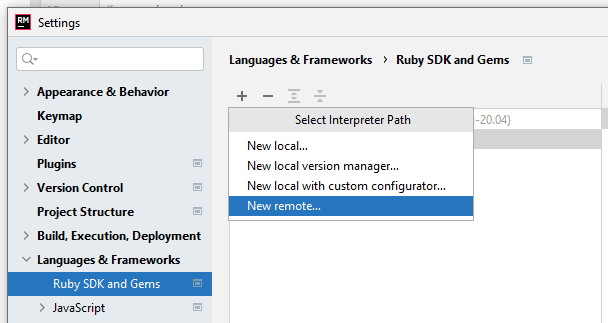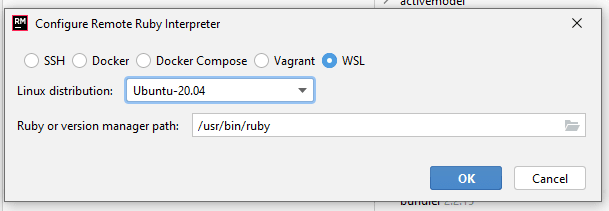I've been playing with Windows Subsystem Linux or WSL for a while now and the advantages of having a working Linux kernel inside my OS (Windows 10). Among which is to be able to configure the Ruby interpreter for my IDE (Rubymine) with the version of Ruby that I have installed in my wsl. For it I will continue with graphs that help in this configuration.
Add an interpreter
1: Open the Settings / Preferences
2: In the Ruby SDK and Gems page, click the + button and select New remote:
3: Provide a path to the Ruby executable, for example:
/home/user-name/.rvm/rubies/ruby-X.X.X/bin/ruby for Ruby installations usin rvm.
/home/user-name/.rbenv/versions/X.X.X/bin/ruby for Ruby installations using rbenv.
4: Udpate the interpreter path:
- Ruby or version manager path: /home/user-name/.rbenv/versions/X.X.X/bin/ruby
Summary
In this simple way we can take advantage of WSL to work with Ruby in a more efficient and comfortable way. In addition you can install the New Windows Terminal to work with bash, powershell, cmd and others.
Thanks you for making it this far \o/.









Latest comments (0)